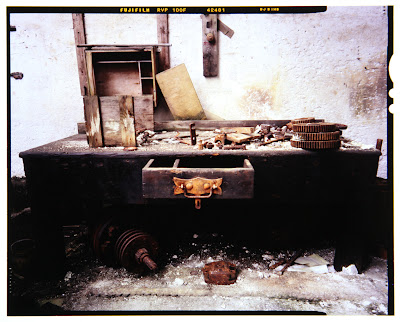I met a guy in a pub once (all the best stories start like that!). We'd just opened the gallery and he was interested in what we were doing so at a later date he came round to see the place and the work I was doing on post-industrial Teesside. He recommended a trip to Blaenau Ffestiniog in North Wales.
The story is that he's a market trader and used to sell Welsh slate on his London market as well as directly to London restaurants as wine racks and canapé trays. Each month he would drive to Wales to pick up his slate and over the period of a few years became good friends with his supplier there.
Mark became a good friend of mine and a flying trip last winter to Wales with him made me realise what an amazing place it is. Blaenau Ffestiniog is at the heart of the Snowdonia national park and yet it has been cut out of the park altogether. It was built to house thousands of slate miners and their families when a major seam was discovered in the mid 19th Century. For 170 years slate as been blasted out of the mountains there resulting in uncomprehendable spoil heaps which rival the mountains themselves for dominance over the landscape. These huge spoil heaps as well as the fact that one remaining quarry is still blasting for slate, meant that Blaenau Ffestiniog was excluded from the national park.
Blaenau Ffestiniog once housed the worlds largest slate mine and this industry now clings on at Llechwedd in a fascinating juxtaposition of industrial heritage and tourism. Above ground blasting continues in an open-cast quarry while underground tourists are led round slate cavers carved out by generations of slate miners. The very idea of tourists paying to go underground where miners dreaded going fascinates me. I was gives access to both sites in a recent trip and will be returning soon. This work is mostly shot on 5x4 transparency - shown here on a lightbox.
All below shot in the open cast quarry which has been owned by the Greaves family for 170 years.





















































